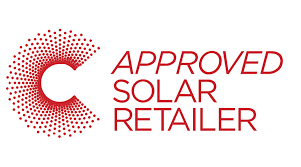Frequently Asked Questions
Are there any extra on-going costs?
– No. Solar Smart Australia quotes all the inclusive costs for product supply, system installation, inspection, its service and maintenance.
Are your systems resistant to storm damage?
At SSA, we provide the latest products that are available in perfect conditions to ensure that you get the highest quality of service. Clean Energy Council has approved and accredited Solar Panels to be designed to withstand and resist extreme weather, which also includes storm and hail.
Can I add further Solar panels to my existing system in future?
We advise you to install the systems of the highest caliber as per your power consumption, for the maximum benefit to your household. If there are any variations to your electricity consumption then you can definitely add more panels to your system.
Do I need a new electricity meter?
Yes, you will require a new bi-directional (import or export) meter if you want to take advantage of reduced electricity bills. The best part is that most meters are smart and compact in size. In fact, they only need a single-time re-programming. SSA will not be responsible for any further costs induced in meter upgrading, if needed.
Does my grind-connected solar power system require batteries?
No. Any extra power produced by the system is directly transferred to the central power grid. However, you may get credits and feed in tariffs for that power when your consumption exceeds the already decided power production.
What about the quality and safety?
Our solar systems are designed to meet all the power safety guidelines and are inspected by a qualified inspector. All systems are issued a “Certificate of Electrical Safety” before we turn the system on.
What is the difference between kW and kWh?
kW stands for kilowatt or 1,000 watts and is used as a means to measure of power. kWh stands for kilowatt per hour and is also used as a measure of used energy.
What are the main types of residential Solar power installations?
There are two kinds of residential solar installation systems. The first one can be connected to the Grid and the Feed-in Tariffs can be collected. The second one is a ‘Stand-alone’ solar system which is set to produce electricity independently for remote properties. These systems are backed up with battery systems for storing purposes
What happens if there is a power-cut or grid malfunctioning?
Our products follow the safety guidelines. However, if there is a case of malfunctioning, any grid-connected solar power systems should be turned off and shut down immediately. This enables a safe repairing way for the grid. Once power is restored, the systems will get reconnected to the grid.
What is the correct size of system for me?
Your ideal solar power system depends on various factors. You can contact our team for further information.
What warranties do I get?
Solar Smart Australia provides a retailer warranty period of 5 years on both operational and performance of the whole solar PV system, which also includes workmanship and products. Additionally, the Clean Energy Council’s approved and accredited Solar PV panels come along with 25-years of performance warranty. Inverters come with a 5 or 10-years limited warranty.
Which direction is the most efficient for aligning solar panels?
For the best results, panels can be mounted on a sloping roof which faces north. However, on a usual basis, panels can be mounted facing anywhere and still provide excellent performance for your household. Moreover, if you don’t have a roof, panels can be installed on a sunnier part of your property. This comes with an additional cost which is quoted to you beforehand.
Do I get any rebate with my purchase of Solar?
An STC is a financial incentive, which is not a rebate. Customers will not qualify for any government-based taxes once the STC creation process is completed.



